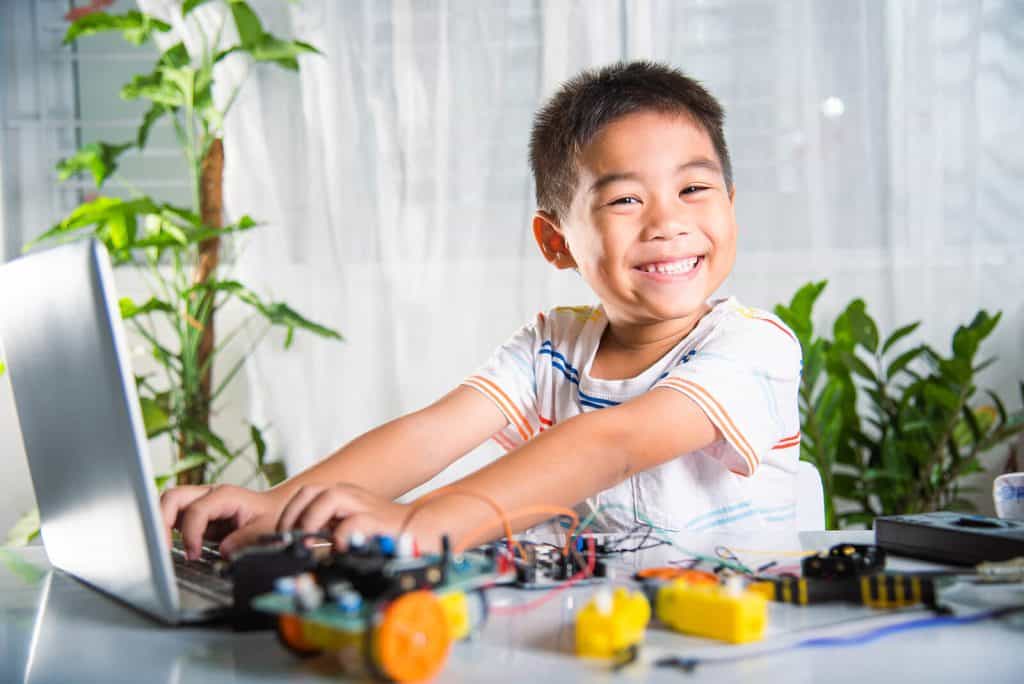The digital world revolves around data and artificial intelligence (AI). Whether we like it or not, AI is now a part of the modern economy. As with its other applications, integrating AI into education has introduced an innovative approach to instruction and learning.
AI is already used in the classroom, mostly in testing and training programs. It’s hoped that, as AI educational solutions continue to develop, they will eventually support schools and instructors to achieve more. It looks set to promote efficiency and streamline administrative processes, giving educators more time to focus on comprehension and adaptability, two areas in which machines now fall short.
The ideal future for AI in education is when machines and humans cooperate to provide students the best possible learning experience. It’s crucial that today’s students have access to and experience AI applications in the classroom, as they will need those skills to thrive in the modern marketplace.
Understanding AI in an Educational Context
Artificial intelligence, or AI, is the ability of machines to perceive, process, infer, or synthesize information that typically requires human intelligence. These systems embody the data engineering definition of assessing information, learning from experience, making decisions, and adapting to new inputs. AI can include machine learning (ML), computer vision, and natural language processing (NLP).
The use of AI in the education sector has completely changed how students and teachers interact. Edtech companies are investing in AI as they continue to evaluate its potential benefits for the education sector. The AI education industry is expected to reach $20 billion by 2027 due to the rising popularity of AI trends like personalized courses, interactive lectures, and gamified lessons for skill acquisition.
Image sourced from appinventiv.com
Why is AI gaining popularity in the education sector?
Let’s start with some benefits of using artificial intelligence in education.
Personalized learning
AI makes it possible to provide students with learning experiences uniquely tailored to their needs by evaluating their data and gaining insight into their areas of strength and weakness. This personalized strategy has the potential to boost student engagement and learning outcomes.
Adaptive assessments
AI also delivers adaptive assessments, modifying the difficulty level and the content to match each student. By doing so, teachers can better determine where their students are struggling and provide them with the specific feedback they need to improve.
Intelligent tutoring systems
AI-driven tutoring systems simulate teacher–student interaction, creating more personalized instruction and guidance. These technologies can provide real-time feedback and tailored support based on each learner’s individual needs.
Automation of administrative tasks
By defining specific conditions and rules, rules-based AI engines can take over routine tasks, reducing the workload for teachers and administrators. These administrative tasks include grading, scheduling, data management, and even messaging. This means teachers have more time to actually teach and interact with students.
Data analysis and predictive analytics
AI can dissect large volumes of educational data and identify patterns that might guide learning decisions. Predictive analytics also support early intervention and assistance by predicting student performance and identifying dropout risks.
Accessibility and inclusion
AI-based tools provide alternative formats, speech-to-text, or personalized provisions for students with special needs or disabilities, ensuring inclusive education.
Lifelong learning and professional development
AI can recommend online courses, suggest professional development techniques, and give educators real-time feedback to improve their teaching.
7 Transformative Ways AI is in Education
1. Adaptive learning tools
Adaptive learning tools are the primary focus of AI research and development in the classroom. These tools use machine learning (ML) algorithms to assess students’ progress and modify lessons accordingly.
Personalizing lessons for each student by adjusting things like content, difficulty, and even tempo is crucial. There is a lot of hope that adaptive learning will help students succeed. Adjusting the student’s learning pace makes them more focused and keeps their engagement levels high.
2. Creating courses
Creating learning courses through a central department takes a lot of resources. Using AI makes course development more efficient, which saves time and money. Whether you are working from scratch or with a premade template, AI streamlines the process of making interactive content. With real-time comments from contributors and content reviewers, your team can collaborate effectively to produce high-quality training materials.
In addition, AI helps educators see which lessons and topics need improvement by evaluating students’ past and present performance in those areas. After assessing each student’s individual needs, educators can adjust their curricula to fill in any gaps in knowledge. This helps educators create personalized lesson plans for each student.
3. Smart content
Teachers and researchers can also benefit from artificial intelligence and machine learning by developing cutting-edge content for easy dissemination of knowledge. While traditional teaching methods offer limited visual elements, AI-driven smart content provides a real-world experience of visualized digital study environments. Smart content includes instructional snippets, digital guides, videos, textbooks, and AI, creating a viable learning environment for institutions based on their objectives.
4. Early learning
Disparities in academic achievement between children of different socioeconomic statuses are widespread. This is particularly true for programs aimed at young children. Children from low-income families are, on average, less prepared for school in terms of their developmental abilities.
Low-income families often face limited access to high-quality early education resources. AI can help bridge this gap by providing online platforms, educational apps, and virtual tutoring programs that offer affordable or free access to interactive and educational content. This enables children from low-income backgrounds to access learning materials that are typically available to their more privileged peers.
5. Behavioral management
Efforts to personalize the learning process go to waste if the students don’t cooperate. The time educators spend maintaining order in classrooms can be channeled toward more productive activities. They can better regulate classroom behavior and keep students focused on learning with the help of AI technology like behavior prediction algorithms, facial detection, and automated feedback tools.
6. AR/VR
Games-based educational approaches have a lot of potential for improving learning outcomes. Student participation, motivation, and collaboration are all boosted by gamification. Educators can further enhance learning potential using AI technologies like AR/VR. They provide a more interactive and immersive approach to keep students engaged.
Combining AI with virtual reality and augmented reality technologies can result in immersive learning experiences. The use of these technologies can increase student engagement and comprehension by simulating real-world events and even scientific experiments.
7. Addressing the skill gap
Businesses still struggling to close the technology gap can benefit greatly from investing in students’ skill sets. Software and app development solutions powered by AI and ML offer students accessible and affordable ways to acquire new skills.
This is not just a consideration for the next generation of workers; investing in the education and development of current employees drives their commitment to progress and innovation. Additionally, by examining how people develop new skills, deep learning and machine learning applications in education influence the learning and development sector. The learning process is automated once the system adjusts to human patterns of learning new skills.
FInal Thoughts in AI in Education
Artificial intelligence holds great promise for the future of the educational system. It has the potential to revolutionize the educational system in ways that will allow every student to succeed. The future of education holds the promise of greater opportunity and success for both students and educators, but only if the classroom can be made into a more accessible, inclusive, and viable learning environment.
FAQ
A: AI is increasingly used in education to enhance learning experiences and streamline administrative tasks. AI-powered educational applications can personalize learning paths for students, offering tailored content and feedback based on individual strengths and weaknesses. Additionally, AI chatbots and virtual tutors provide instant support to students, while AI-driven data analysis helps educators identify areas for improvement and optimize teaching strategies.
A: While AI can augment the teaching process, it cannot entirely replace teachers’ role in the classroom. Human interaction, empathy, and emotional intelligence are essential aspects of the learning process that AI cannot replicate fully. Instead, AI serves as a valuable tool that complements teachers by automating routine tasks, providing personalized learning, and facilitating data-driven decision-making.
A: AI in education enables personalized learning by analyzing students’ performance data, learning styles, and interests. This information helps create customized learning paths, recommending relevant educational content and exercises matching each student’s needs. Through adaptive learning algorithms, AI adjusts the difficulty level of assignments, quizzes, and assessments, allowing students to progress at their own pace.
A: AI benefits both students and educators. For students, AI-powered tools offer individualized support and a deeper understanding of complex topics. For educators, AI helps automate administrative tasks like grading, attendance tracking, and resource organization, freeing up more time for lesson planning and individual student assistance. AI-generated insights on student performance also aid teachers in identifying struggling students and implementing targeted interventions.
A: AI is revolutionizing the assessment and evaluation process in education. Intelligent assessment platforms can grade objective assessments like multiple-choice questions quickly and accurately, saving educators valuable time. AI can also evaluate subjective components, such as essay responses, by analyzing language patterns and content quality. Additionally, AI-driven proctoring solutions help ensure academic integrity during remote exams by detecting potential cheating behaviours and anomalies in real time.

